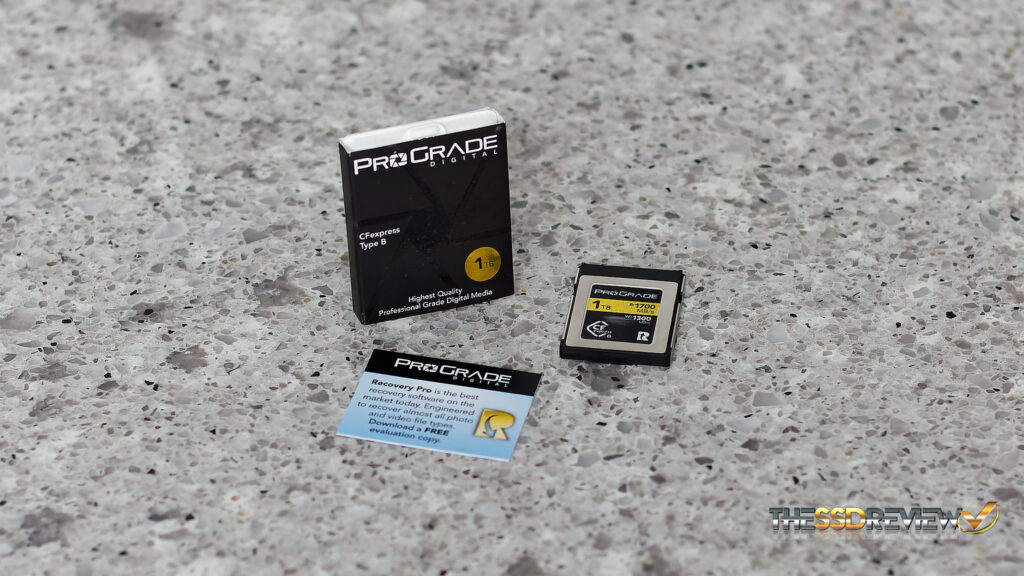CFExpress Type B cards have become a main stream item and will be here for some time. We don’t feel the same with respect to CFExpress Type A as it is supported by few media devices in comparison and can’t come close to capacity or speed of CFExpress Type B. Don’t get me wrong. CFExpress Type B has had its growing pains as well, the worst being initial heat concerns which could burn your fingers if you removed the card to quickly. Parallel to this, we discovered that this heat bi-product would also limit the features of your Canon R5 camera as I saw first hand buying that camera on its initial release. This is why we are one of, if not the only website testing CFExpress Type B sustained write performance in the world today.
We are hopefully moving into a new era now where CFExpress Type B cards will be introduced with higher sustained write performance and cooler temperatures. At least up until this report, those that needed high sustained write speeds were limited to somewhat lower capacity drives to a maximum of 650GB, the ProGrade Cobalt 650GB CFExpress Type B Memory Card being top dogin that category and still being the only card that has resided in my camera on a regular basis. There hasn’t been a 1TB or larger card with sustained writes above 380MB/s just yet, much less anywhere near the 1300MB/s mark of the best cards available today.
ProGrade Digital has just released their newest ProGrade Digital CFExpress Type B GOLD 2.0 Memory Card and we have one in our ‘not so hot’ little hands for testing. Specifications for this card are 1700MB/s read, 1500MB/s write with an all important sustained write speed or 1300MB/s, and most importantly, the size of the Gold 2.0 is a very healthy 1TB, something that hasn’t been seen prior. It’s has built in thermal throttling to protect the card, however we could not get it hot enough to activate and the case itself is metal to provide for better thermal conductivity. This is a very cool card considering.
Checking Amazon, we are not yet seeing the see that the ProGrade Digital CFExpress Type B GOLD 2.0 Memory Card just yet but we are aware that it’s list price is $399, this being incredibly low considering the storage medium, capacity, performance, and a 3-year limited warranty. ProGrade also has a complementary trial period for their Refresh Pro and Recovery Pro memory software, both programs that provide security for your device and data. Let’s take a look at some metrics.
TSSDR TEST BENCH AND PROTOCOL
CFExpress Card testing at TSSDR differs slightly, depending on whether we are looking at consumer or enterprise storage media. For our ProGrade Digital CFExpress Type B GOLD 2.0 1TB Memory Card testing today, our goal is to test in a system that has been optimized with our SSD Optimization Guide.
For this Test Bench, there are no performance tweaks whatsoever and the new ASUS Maximus Z790 Hero brought us to over 6GHz while the newest Kingston Renegade Fury DDR-5 memory rests comfortably at 7200MHz.
The components of this Test Bench are detailed below. All hardware is linked for purchase and product sales may be reached by a simple click on the individual item.
INTEL Z790 PCIE 5.0 COMPONENTS
| PC CHASSIS: | Corsair 5000D RGB White Tempered Glass Chassis |
| MOTHERBOARD: | ASUS ROG Maximus Z790 Hero Gen 5 |
| CPU: | Intel 13th Gen Core i9-13900K |
| CPU COOLER: | Corsair Hydro Series H150i Capellix White |
| POWER SUPPLY: | Corsair HX1000i Platinum Modular 80Plus |
| GRAPHICS: | ZOTAC GeForce RTX 3080 Trinity White |
| MEMORY: | Kingston Renegade Fury RGB DDR5-7200 32GB |
| STORAGE: | Sabrent Rocket 4 Plus Gen 4 4TB NVMe SSD |
| KEYBOARD: | Corsair K70 PRO RGB Optical Mechanical Gaming |
| MOUSE: | Corsair M65 RGB Elite FPS Gaming |
| MONITOR: | Samsung 34″ 1440p WQHD Ultrawide Gaming |
 The SSD Review The Worlds Dedicated SSD Education and Review Resource |
The SSD Review The Worlds Dedicated SSD Education and Review Resource | 


The ProGrade Gold card tested well, but it’s a 1 TB card. The 128 GB ProGrade Gold card is exceptionally slow as tested in my Z6, Z7ii, and D850. While these tests are valid, it’s the in-camera performance that matters and it can be quite different.